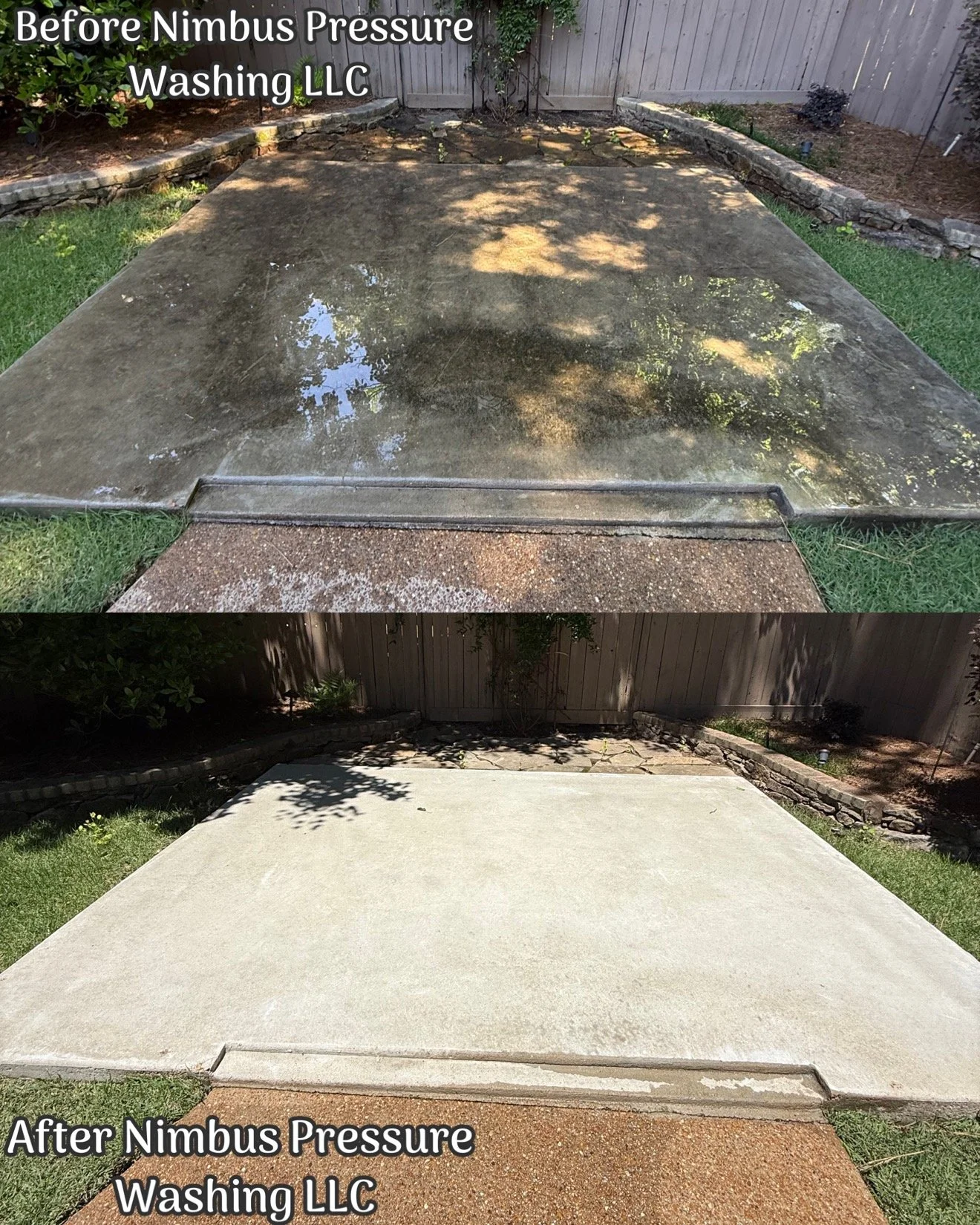Concrete Cleaning
Concrete Cleaning 101: What You Should Know
Concrete is everywhere—driveways, patios, sidewalks, porches, pool decks. It’s durable, reliable, and low-maintenance, but that doesn’t mean it doesn’t need a little TLC now and then. Over time, concrete collects dirt, stains, mold, and other buildup that can affect both its appearance and its longevity.
Whether you’re a homeowner looking to freshen things up or just curious about the benefits of keeping your concrete clean, here’s a quick guide to help you out.
Why Clean Your Concrete?
1. Keep It Looking Great
Concrete might be tough, but it’s also porous. That means it easily absorbs oil, grime, rust, and organic stains like mold or algae. Cleaning it helps restore its original look and keeps your outdoor areas looking well-kept.
2. Prevent Long-Term Damage
When dirt and algae build up over time, they can start to break down the surface of your concrete. Regular cleaning removes harmful buildup and helps extend the life of your concrete.
3. Improve Safety
Slippery surfaces caused by mildew or algae can be dangerous, especially on walkways and around pools. Pressure washing removes these hazards and helps make your concrete safer to walk on.
4. Boost Property Value
Clean outdoor spaces always add to a property’s curb appeal—whether you're just maintaining it or thinking about selling.
How Is Concrete Cleaned?
Most concrete cleaning is done with pressure washing. This involves using high-pressure water to lift away surface dirt and grime. Sometimes, eco-friendly cleaning solutions are added to help break down stains or remove algae.
At Nimbus Pressure Washing, we use the right pressure and cleaners for each job, making sure your concrete is cleaned thoroughly without damage. We’re also extremely careful to protect your landscaping by watering plants before and after treatment.
How Often Should You Clean Your Concrete?
For most homeowners, once or twice a year is enough to keep things looking sharp. If you live in a damp climate or have lots of tree coverage, you might need to clean more often to prevent mold and algae buildup.


